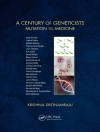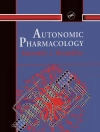It is an exciting task to be the editor of the first monograph covering a new area of the biomedical sciences. Since the first report in 1980 by Robert Furchgott and colleagues (see Chapter 1) of the evidence of endothelium-dependent relaxation in isolated arteries, there are ever- increasing numbers of vascular physiologists and pharmacologists who are scraping away the endothelium to look into its role in cardiovascular con- trol. And the more one looks, the more one discovers. Not only is the list of substances that can induce endothelium-dependent relaxations im- pressively long, but these intriguing cells can also secrete vasoconstrictor substances. The ability of the endothelium to modulate the degree of con- traction of the underlying smooth muscle is an ancestral property of the blood vessel wall, illustrating the logic of nature, since the endothelial cells are located in the best possible strategic location to continuously monitor the properties (chemical or physical) of the blood. And more and more data emerge suggesting that in several cardiovascular diseases per- turbations in endothelium-dependent responses are one of the early signs of the abnormal process. Thus, the importance of endothelium-dependent responses, triggered by the intellectual curiosity of one of the pioneers of vascular physiology and pharmacology, is now recognized not only by basic scientists, but also by all concerned with the cardiovascular diseases. The purpose of this monograph is to provide them with a reference work, so that they know where to start.
Paul M. Vanhoutte
Relaxing and Contracting Factors [PDF ebook]
Biological and Clinical Research
Relaxing and Contracting Factors [PDF ebook]
Biological and Clinical Research
Buy this ebook and get 1 more FREE!
Language English ● Format PDF ● ISBN 9781461245889 ● Publisher Humana Press ● Published 2012 ● Downloadable 3 times ● Currency EUR ● ID 4611042 ● Copy protection Adobe DRM
Requires a DRM capable ebook reader












